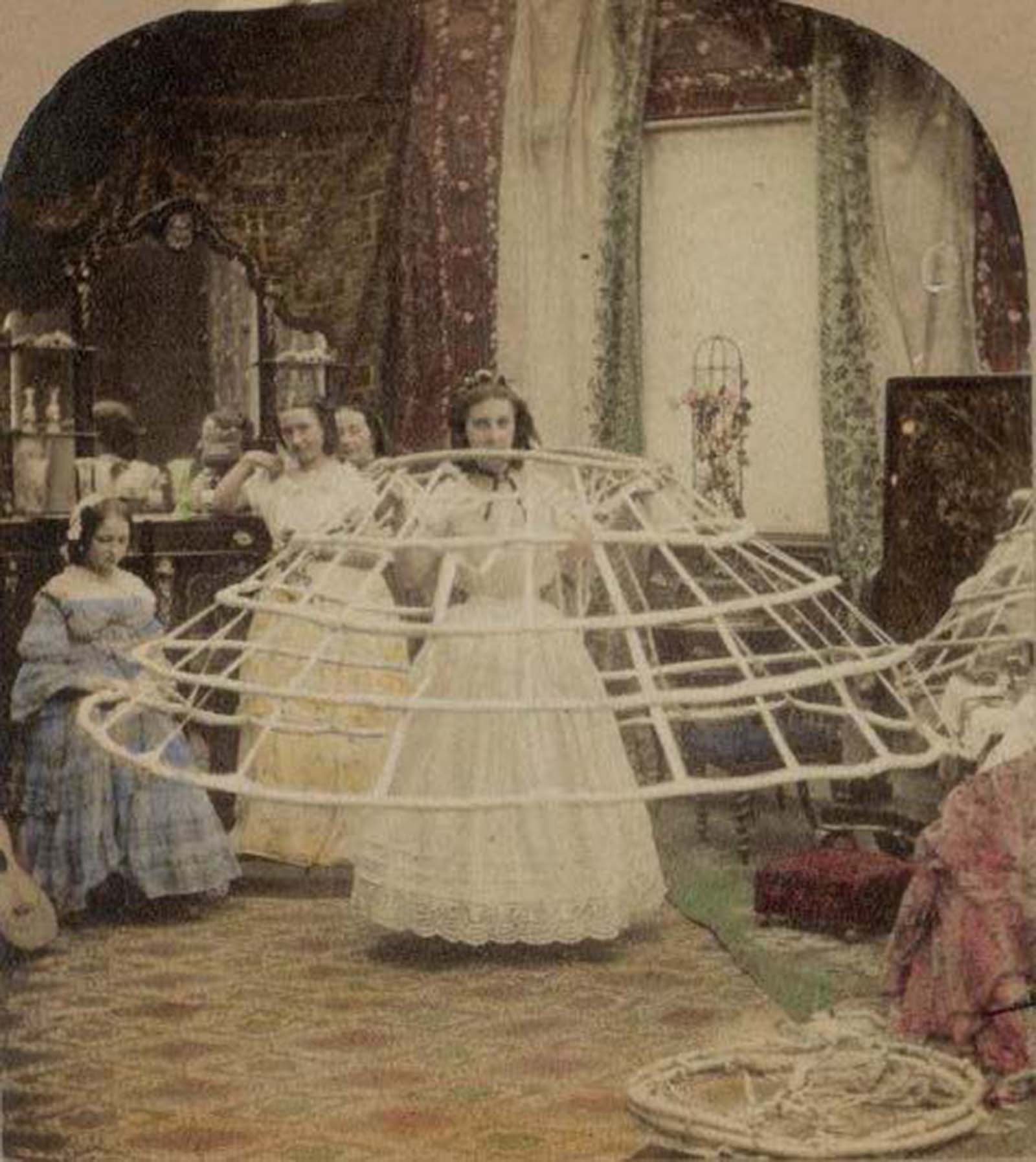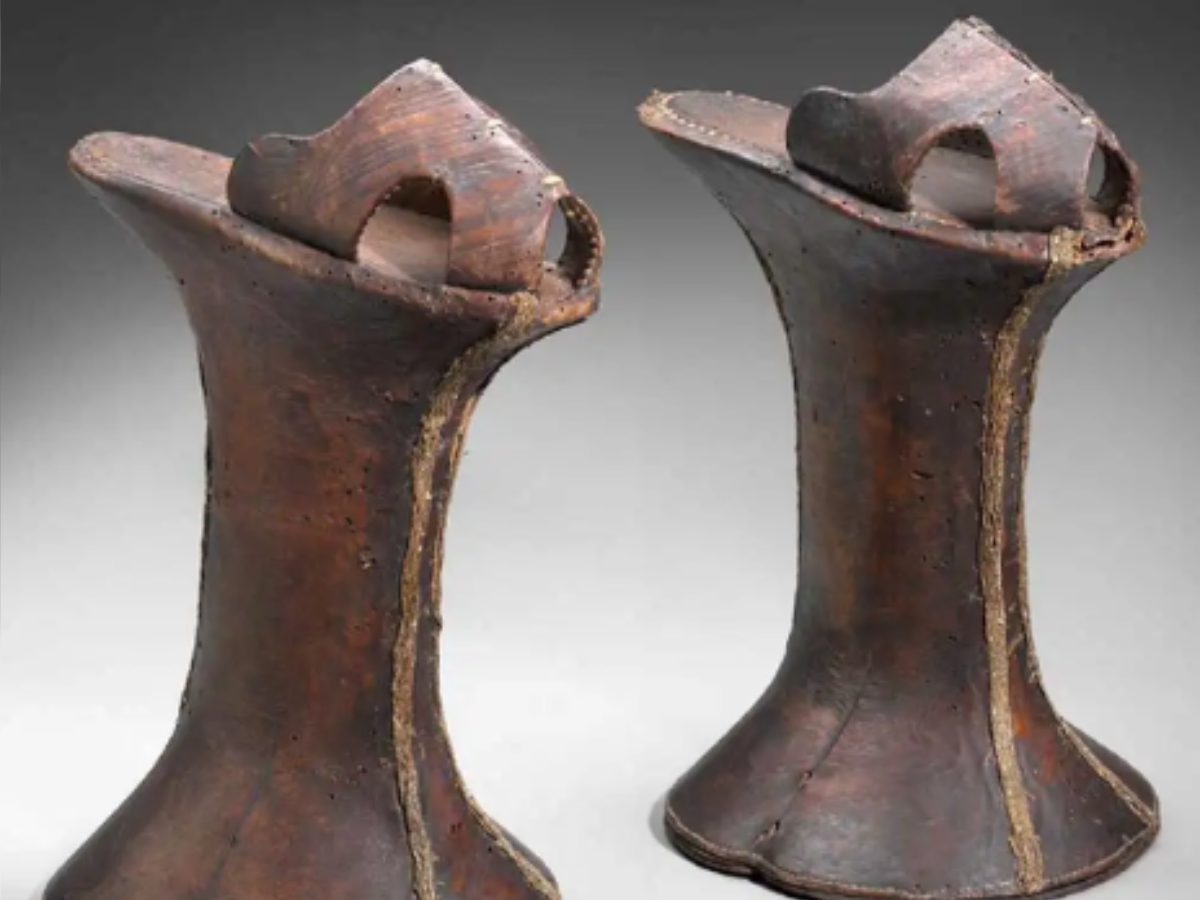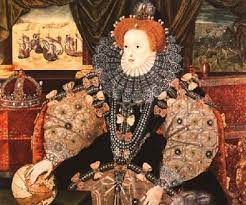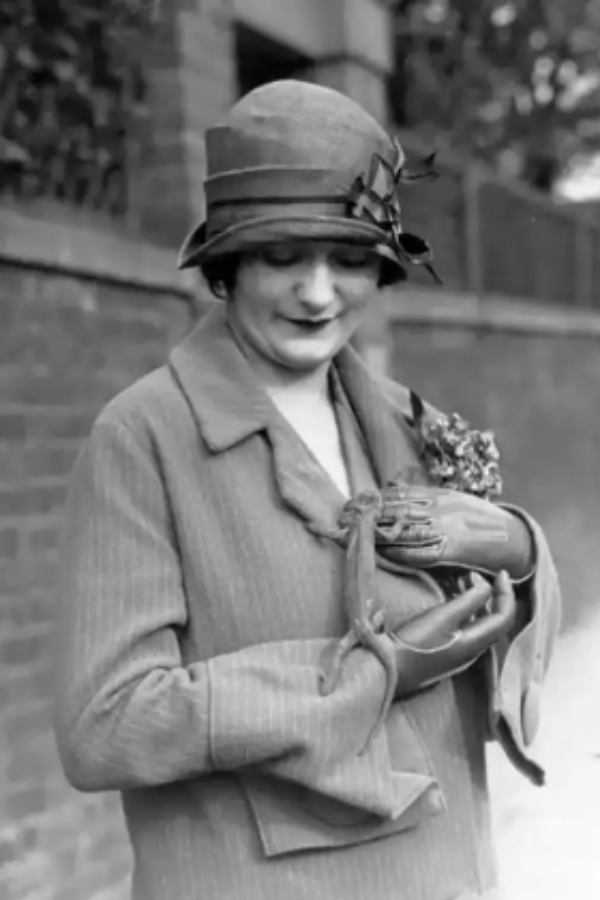We’ve all seen older generations who are shocked when told that these pants are tattered and intentionally tattered.
Fashion trends have been condemned throughout history, whether it’s the length of flapper dresses, the height of stiletto heels, or the high, curly hair of the 1980s, but they are trends because of the following they they get, no matter how brief.
Fashion is a long-lasting tradition, but fads are usually fleeting. What was fantastic five years ago may seem strange to us today, and this is amplified as we look further back in history. Here, we will look at eight fashion trends that have gone down in history.
Jump to
- 1. Crinolines
- 2. Arsenic dye
- 3. Chopines
- 4. Blackened teeth
- 5. Living jewelry
1. Crinolines
 rare historical photos
rare historical photos
The crinoline, often known as a hoop skirt, was a type of petticoat popular among wealthy people in the 19th century. Victorian women were obsessed with having a tiny waist and one method was to make the skirt look like an inflated balloon.
Crinolines emerged from older fashion styles, such as the Spanish verdugada and French saddlebags or side hoops, which were popular during the 18th century.
The farthingale increased the diameter of the skirt around the wearer’s waist, causing the skirt to fall downward around the frame of the farthingale. Panniers were similar to crinolines in structure, but only enlarged the skirt on the sides while keeping the front and back flat.
2. Arsenic dye
Victorian England also saw a rise in the popularity of brightly colored fabrics, particularly one produced in Germany in 1814 that gave the fabric a striking “emerald green.”
It made the wearer stand out like a diamond from the crowd. The only drawback to the color was its composition, which mixed arsenic trioxide, or “white arsenic”, with copper to produce such a vibrant color. It was cheap and abundant, but the consequences for the user and the manufacturer were irreversible.
3. Chopines
 elcollector.com
elcollector.com
The original platform shoe, the Chopine, was worn by women in Venice to keep their skirts clean and avoid stepping in mud. However, the shoes quickly became a symbol of prestige.
The higher the shoe, the higher the woman’s social level. Chopines were made by sewing delicate velvet or silk slippers onto blocks of wood or cork and were used during the 15th, 16th, and 17th centuries.
Most of the cork supply in 15th century Spain was used to make shoes for wealthy noblewomen. Many Chopines practiced walking and could walk quite well, towering above their contemporaries, figuratively and literally looking down on them.
4. Blackened teeth
 Historical United Kingdom
Historical United Kingdom
Queen Elizabeth I, who had a notorious sweet tooth and feared dentists, popularized blackened teeth during the Tudor period. Sugar imported from the British Caribbean colonies exacerbated Queen Elizabeth’s sweet tooth. Sugary foods on the table, along with poor oral hygiene, were considered a sign of wealth.
Ordinary people in Tudor England stained their teeth black to look wealthy and copy the aristocrats, with the goal of looking like they could buy sugar like the Queen. The nobility ruined their teeth with abandon, preferring to demonstrate their social position with their ability to acquire sugar rather than by maintaining white and healthy teeth.
5. Living jewelry
 elcollector.com
elcollector.com
In the 1890s, there was a fashion in America that combined pet ownership with animal-inspired jewelry. Women were sold live chameleon-like lizards that changed color with their clothing, providing a matching gem for each garment. Women embraced the idea and placed the tiny creatures in small necklaces attached to small chains that would attach them to a brooch, a scarf, or even the wearer’s hair.
While stuffed, animal-inspired jewelry was not a new idea, it had its origins in the Roman and Mayan civilizations. By the second half of the 20th century, the practice had virtually disappeared from the mainstream. Live ornaments were swapped for more benign insects, like the butterfly clips that were popular in the 1990s.
What do you think about this? Tell us in the comments.
For more trending stories, follow us on Telegram.
Categories: Trending
Source: vtt.edu.vn